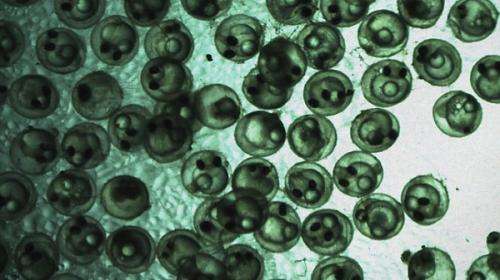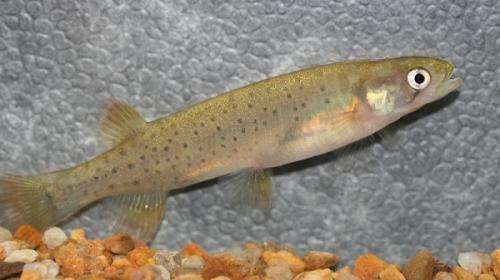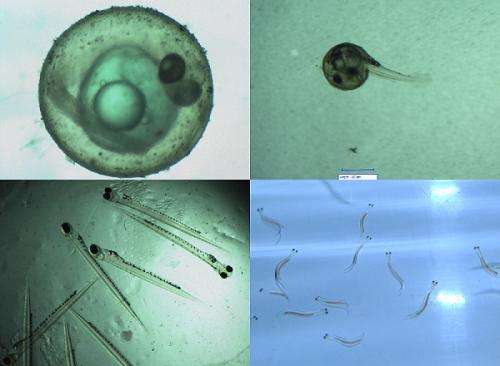Local fish bred in captivity for first time in vitro

The western trout minnow has been saved from the brink of extinction by research that has bred the tiny fish in captivity for the first time.
It uses a procedure similar to a human IVF; eggs and sperm are meticulously stripped from brood stock and the eggs fertilised and incubated at a hatchery at UWA.
Department of Fisheries researcher Craig Lawrence says importantly, the embryos produced in the laboratory are free from the pathogens that kill many fish eggs and larvae in nature.
An estimated 500 hatchlings have already been bred and numbers are expected to swell in the next week.
Most will be used to create a breeding population to produce juveniles to restock waterways, helping the species survive and re-establishing healthy ecosystems.
It was estimated that 2000–5000 western trout minnows remained in the wild in 2006, concentrated in a 4km stretch of the Goodga and Angove river systems near Albany in the state's south.
The fish (Galaxias truttaceus hesperius) need very specific environmental conditions to spawn, including the right water temperature and flow rate, barometric pressure, light and specific materials on which to lay their sticky eggs.

This rigid window for reproduction when all the environmental conditions coincide, combined with waterways blocked by dams and weirs preventing their spawning 'run' and changes to land are blamed for the decline in numbers.
Dr Lawrence says the team of researchers from Fisheries and UWA's School of Animal Biology first tricked the fish into breeding in the wild in special traps by emulating natural conditions. They then harvested the eggs for laboratory hatching.
"I changed the environmental parameters of our laboratory hatching system to be exactly the same as in the wild—same light, flow rate and temperature.
"The challenge was that the pathogens from the wild had come with the eggs into the hatchery," he says.

"So while this technique worked, we then moved on to develop hatchery spawning protocols for this fish species so their entire lifecycle can be completed in our facility.
"Hatchery fertilisation and rearing protected the eggs and larvae from predators and ensured a constant supply of food for the young fish larvae, resulting in much higher survival rates than could ever be expected in the wild."
Dr Lawrence says a 2010 survey of fresh water bodies between Geraldton, Busselton and Northam found many water bodies didn't have native fish, only feral fish and some had none at all.
Provided by Science Network WA



















